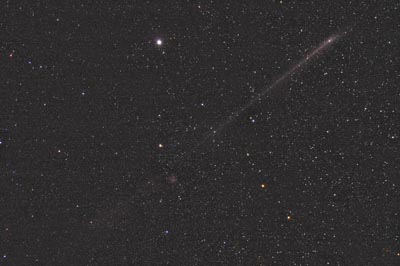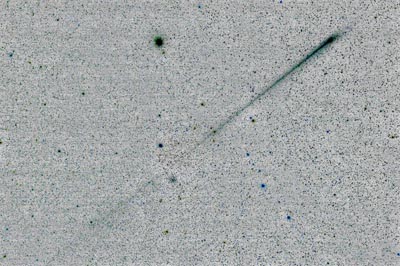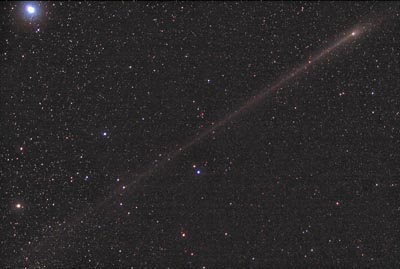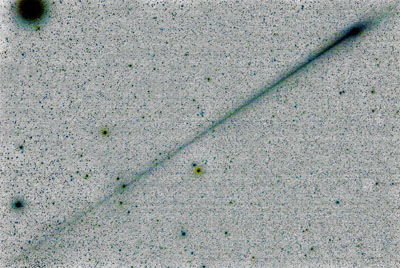|
On May 27th,
a remarkable event occurred - The Earth passed into the orbital
plane of comet Panstarrs. Normally, this is non-event, for most
comets the amount of dust in the orbital plane scattered about
by the comets head is so small that only very rarely do we see
the edge on dust plane projected on to the sun ward side of the
comet. But Panstarrs was one of the most dusty comets I have
ever seen. Even a month away from crossing, there were signs
of a good potential for large amounts of dust to be following
the comet around the sun. On the date of crossing, with only
one hour of darkness after the full moon, the comet displayed
a monster anti tail, some reports were it was over 16 degrees
long! This was unprecedented. I personally had never seen anything
like this in over 35 years of comet imaging and viewing. In the
binoculars, this 8th magnitude faint smudge was very oblong in
shape, and I could spot at least 6 degrees of anti tail in the
9x 63 binoculars.
When I imaged the
field with both 100mm and 200mm settings on the zoom lens, the
results showed that I had to radically offset the head in the
field to get the entire tail to fit. Plenty of short test exposures
led to putting the comet right in the upper right corner of both
frames. The tail was full frame diagonally in both shots, 8 degrees
for the 200mm and yes - nearly 15 degrees for the 100mm shot!
Here are the images both in conventional and contrast stretched
negative format to show you what we obtained.
|



